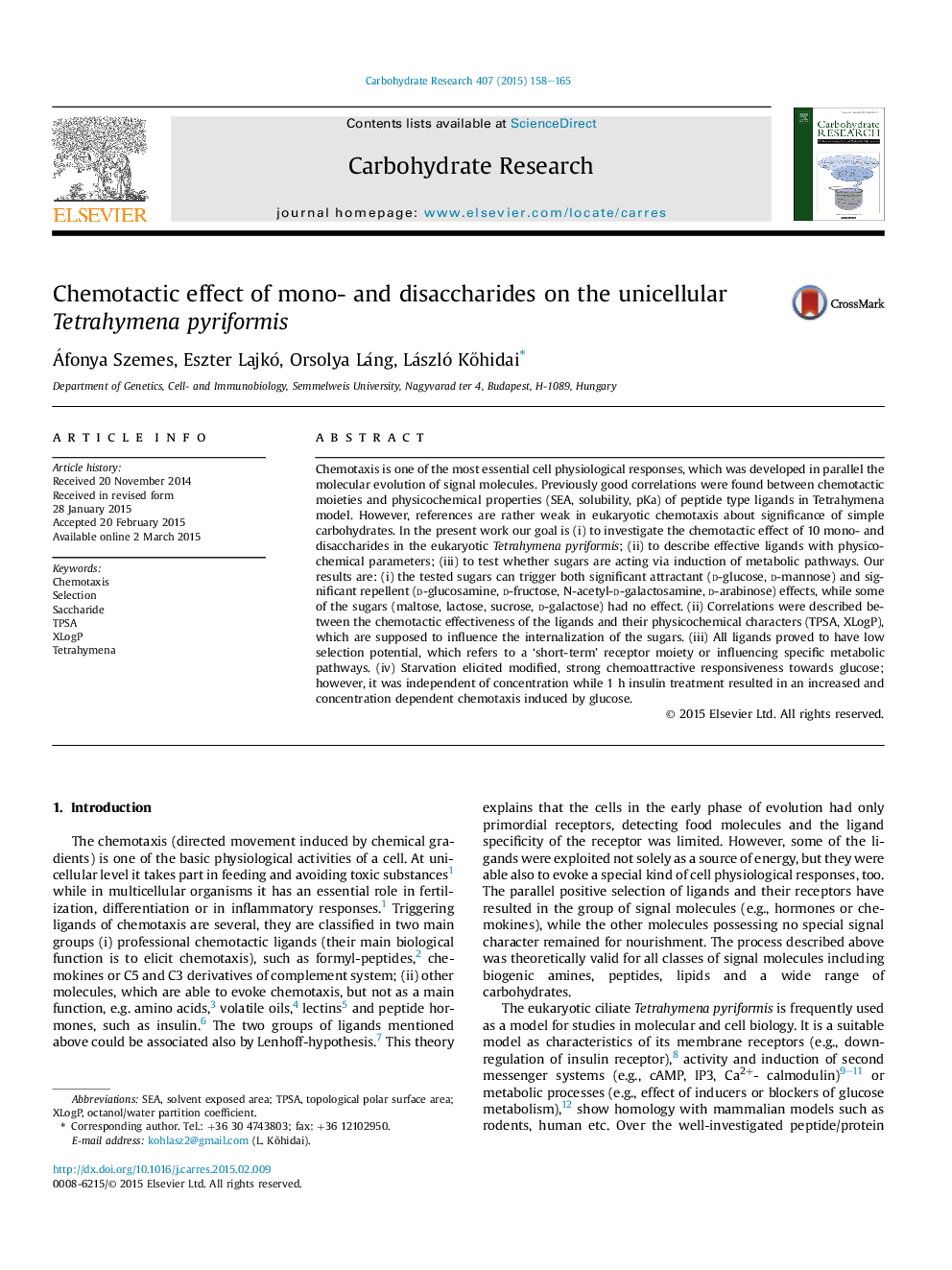| Article ID | Journal | Published Year | Pages | File Type |
|---|---|---|---|---|
| 1390169 | Carbohydrate Research | 2015 | 8 Pages |
•Chemotactic activity of 10 mono- and disaccharides was tested in eukaryotic ciliate Tetrahymena model.•Interrelations were described between chemotaxis and TPSA, XlogP values of the tested ligands.•All saccharides proved to have low selection potential in the model cell.•Data refer to a ‘short-term’ receptor moiety in chemotaxis induced by the tested saccharides.
Chemotaxis is one of the most essential cell physiological responses, which was developed in parallel the molecular evolution of signal molecules. Previously good correlations were found between chemotactic moieties and physicochemical properties (SEA, solubility, pKa) of peptide type ligands in Tetrahymena model. However, references are rather weak in eukaryotic chemotaxis about significance of simple carbohydrates. In the present work our goal is (i) to investigate the chemotactic effect of 10 mono- and disaccharides in the eukaryotic Tetrahymena pyriformis; (ii) to describe effective ligands with physicochemical parameters; (iii) to test whether sugars are acting via induction of metabolic pathways. Our results are: (i) the tested sugars can trigger both significant attractant (d-glucose, d-mannose) and significant repellent (d-glucosamine, d-fructose, N-acetyl-d-galactosamine, d-arabinose) effects, while some of the sugars (maltose, lactose, sucrose, d-galactose) had no effect. (ii) Correlations were described between the chemotactic effectiveness of the ligands and their physicochemical characters (TPSA, XLogP), which are supposed to influence the internalization of the sugars. (iii) All ligands proved to have low selection potential, which refers to a ‘short-term’ receptor moiety or influencing specific metabolic pathways. (iv) Starvation elicited modified, strong chemoattractive responsiveness towards glucose; however, it was independent of concentration while 1 h insulin treatment resulted in an increased and concentration dependent chemotaxis induced by glucose.
Graphical abstractFigure optionsDownload full-size imageDownload as PowerPoint slide
